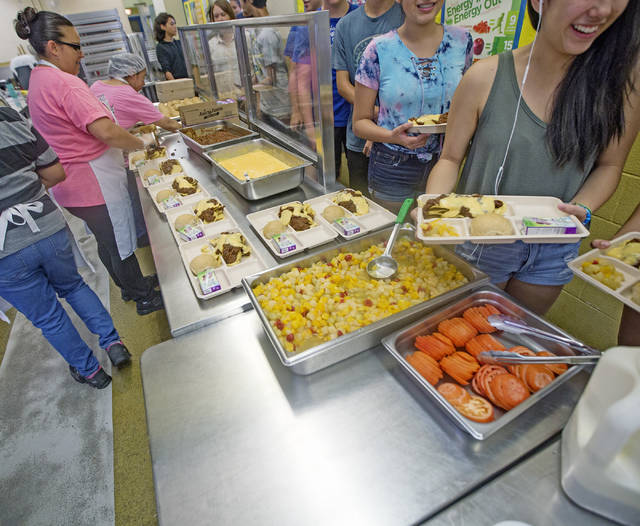More students in Hawaii took advantage of free summer meals last year, according to a national report released this week.
The “Hunger Doesn’t Take a Vacation” report, compiled by the Washington, D.C.-based Food Research and Action Center, shows an average of 6,767 Hawaii students were served meals each day in July 2016 through a federally funded summer food program that targets low-income children.
That’s a 25 percent increase from the average of 5,411 meals served daily in July 2015 and 10.8 percent of the 62,699 students who ate school lunches on a typical day during the 2015-16 school year.
Nationally, the summer meals participation rate was about 15 percent in July of last year.
The report gave Hawaii a No. 37 overall ranking, up from No. 47 in 2016.
“We’re glad to see Hawaii making some great progress,” said Nicole Woo, senior policy analyst at the Honolulu-based nonprofit Hawaii Appleseed Center. “It’s really nice to see a jump from 47th in the nation to 37th. But we’re still under the national average … even though we’ve had these huge jumps these last few years less than 1 in 9 (Hawaii low-income students) are getting summer meals through this program so you have to wonder what these kids are eating otherwise.”
Many Hawaii public schools participate in the Seamless Summer Option, a U.S. Department of Agriculture summer food program designed to help low-income students continue receiving nutritious meals once school’s not in session.
The program follows the same nutrition guidelines as the National School Lunch Program, which is offered at public schools during the school year.
At least part of last year’s participation increase could be due to more options — 68 public schools statewide served summer meals through Seamless Summer Option in 2016, up from 42 the year prior. This summer, that number is down slightly to 63.
To be eligible to serve meals, at least half a school’s enrolled students must qualify for free or reduced priced meals. A school also must offer a summer program.
Studies show many students fall back slightly academically during the summer, Woo said, known as the “summer slide.” She said that learning loss is higher among low-income students. She said if students know meals are offered, they also might be more inclined to participate in summer programs available at a school.
“Higher income kids are going to summer camp, museums and all these enrichment activities,” Woo said. “And that accumulates over the course of a student’s academic career and it’s at least part of the cause in differences in academic achievement gaps between low-income students and their peers. So being able to get kids to come to these (meal) programs is really important for their academics as well. If they know there’s a free lunch, they may be more likely to go to a program during the day.”
Email Kirsten Johnson at kjohnson@hawaiitribune-herald.com.






